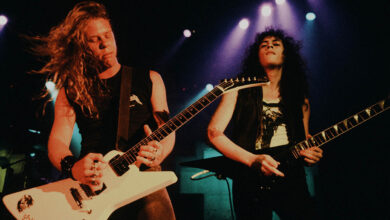An Emotional Interpretation of ‘Imagine’ by Queen and Paul Rodgers
Freddie Mercury’s passing in November 1991 left Queen’s future uncertain. The band managed a few performances, such as joining George Michael for the Freddie Mercury Tribute Concert in 1992, completing the album “Made in Heaven” (1995) with unreleased Queen tracks, and performing “The Show Must Go On” with Elton John in Paris in 1997, after which bassist John Deacon retired. However, it wasn’t until Brian May teamed up with Paul Rodgers during a 2004 Fender Stratocaster 50th-anniversary concert in London that Queen found a new spark.
Paul Rodgers, known for his work with Free, Bad Company, and The Firm, clicked with May, leading to an invitation to join Queen for their UK Music Hall of Fame induction. This collaboration blossomed into a European tour and performances at Nelson Mandela’s 46664 Aids-benefit concerts in 1985.
This video captures Queen and Paul Rodgers’ performance in Hyde Park, London, on 15 July 2005, featuring a unique rendition of “Imagine.” Brian May, Roger Taylor, and Paul Rodgers share vocal duties, with May on a 12-string acoustic guitar and Taylor on drums. The arrangement gains a special resonance as the audience joins in, reflecting on the song’s message of peace.
Rob J Golde and Nancy Blumberg’s comments reflect the appreciation for this rendition, highlighting the seamless integration of Rodgers into the Queen family. The performance also served as a tribute to the victims of the 7 July 2005 London bombings, though it wasn’t Queen’s first homage to John Lennon.
The second video shows Queen’s tribute to Lennon at Wembley Arena on 9 December 1980, the day after his tragic death, highlighting the band’s respect for the late musician.
While the collaboration between Queen and Paul Rodgers rejuvenated the band post-Mercury, differences in musical style meant it was a temporary arrangement. Brian May expressed in a 2014 Classic Rock interview that Rodgers’ blues and soul background made him an unmatched fit for Queen, leading to their eventual partnership with Adam Lambert, whose flamboyant style more closely mirrored Mercury’s.
Rodgers, with his rich musical career, balanced his time with Queen alongside solo projects and Bad Company reunions. He amicably ended his collaboration with Queen in 2009 but remained open to future joint efforts. Reflecting on his time with Queen, Rodgers shared the exhilarating and unexpected journey, emphasizing the enduring friendship and creative synergy shared among them.





